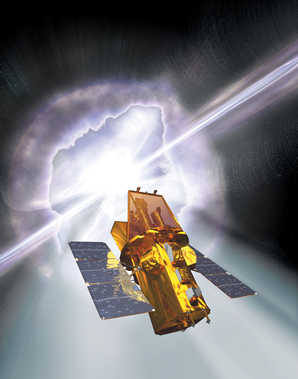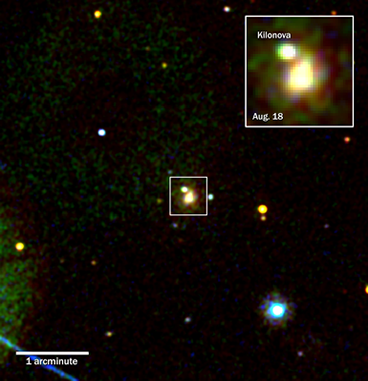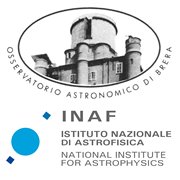
The Neil Gehrels Swift Observatory is a NASA medium explorer satellite developed in collaboration with Italy and the United Kingdom. The name is not an acronym but refers to the English name of the swift, one of the birds with the most agile and fast flight, and was chosen to recall the speed of pointing of the satellite, guaranteed by a gyroscopic system controlled by electric engines.
|
 The Swift mission patch depicts both the spacecraft and the bird for which it was named. The observatory is named after a small, nimble bird that can grab up insects as it flies through the sky. Similarly, the observatory can swiftly turn and point its instruments to catch a gamma-ray burst "on the fly" to study both the burst and its afterglow. This afterglow phenomenon follows the initial gamma-ray flash in most bursts and it can linger in X-ray light, visible light and radio waves for hours or weeks, providing great detail for observations. Credits: NASA E/PO, Sonoma State University/Aurore Simonnet. |
All these scientific objectives have been achieved and Swift still manages to reserve new surprises for us. Furthermore, thanks to the speed and flexibility of repointing, Swift over the years has been and is used to study all types of high energy sources: from comets to stars, to galactic compact objects, to active galactic nuclei, to galaxies and clusters of galaxies, often making new discoveries in every field, and becoming a point of reference for time domain astronomy. | |
 Artist’s impression of the Swift spacecraft. Credits NASA/Swift. |
 Swift’s Ultraviolet/Optical Telescope imaged the kilonova produced by merging neutron stars in the galaxy NGC 4993 (box) on Aug. 18, 2017, about 15 hours after gravitational waves and the gamma-ray burst were detected. The source was unexpectedly bright in ultraviolet light. It faded rapidly and was undetectable in UV when Swift looked again on Aug. 29. This false-color composite combines images taken through three ultraviolet filters. Inset: Magnified views of the galaxy. Credits: NASA/Swift |
| |
| INAF-OAB Team | |
| Sergio Campana - PI of the Italian group and XRT telescope calibration manager - sergio.campana AT inaf.it | |
| Maria Grazia Bernardini - Scientist - maria.bernardini AT inaf.it | |
| Stefano Covino - Scientist - stefano.covino AT inaf.it | |
| Paolo D'Avanzo - Scientist - paolo.davanzo AT inaf.it | |
| Chiara Salvaggio - Scientist - chiara.salvaggio AT inaf.it | |
| Tullia Sbarrato - Scientist - tullia.sbarrato AT inaf.it | |
| Gianpiero Tagliaferri - Scientist - gianpiero.tagliaferri AT inaf.it | |
| Crediti pagina web: S. Campana - M.R. Panzera | |




 The
The 